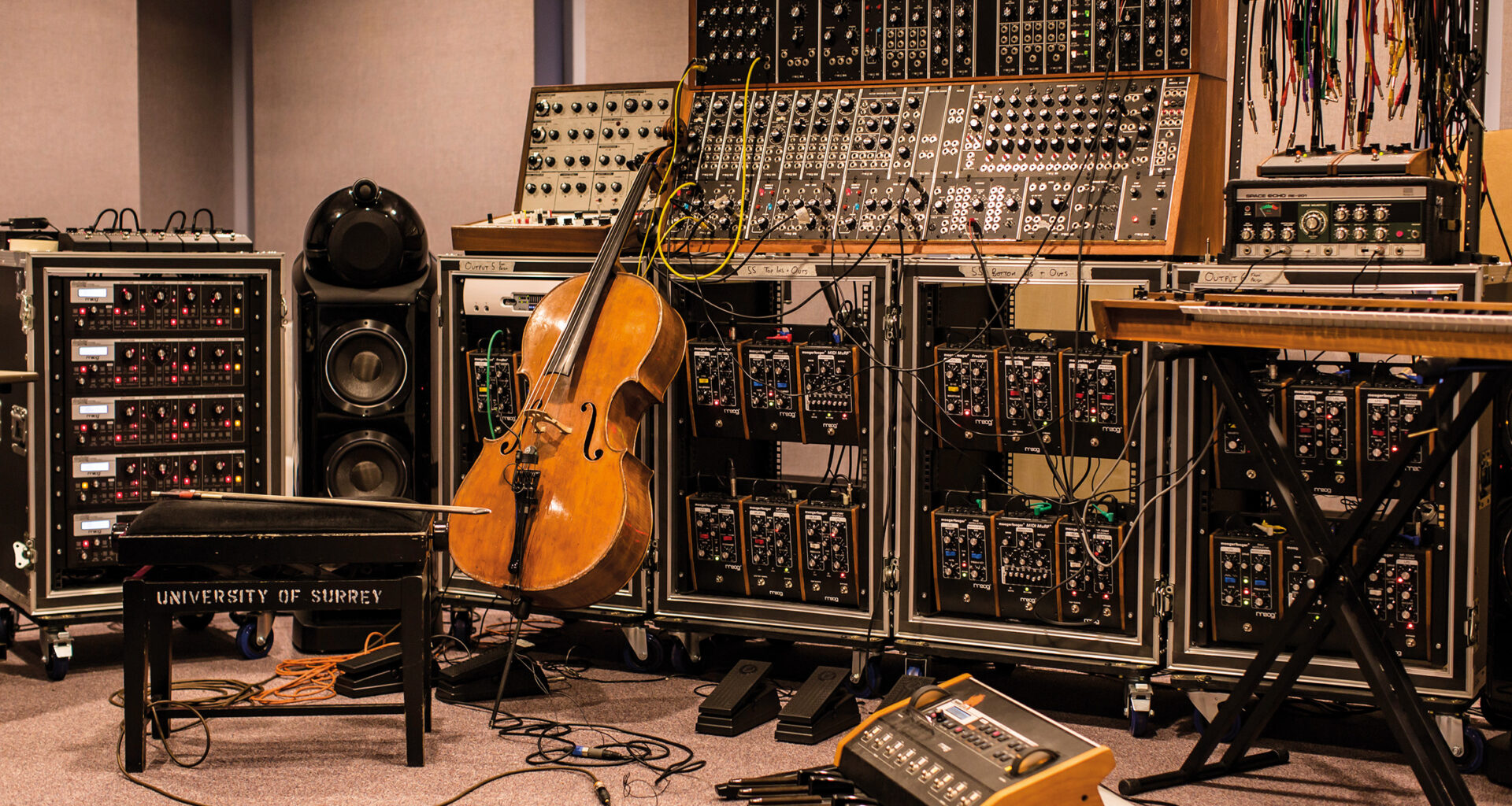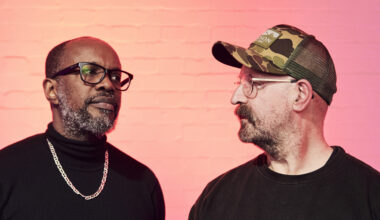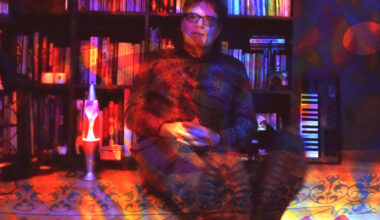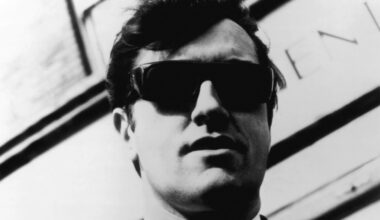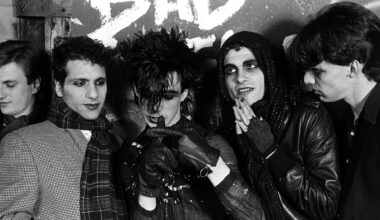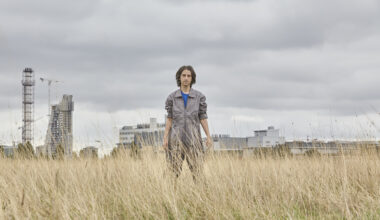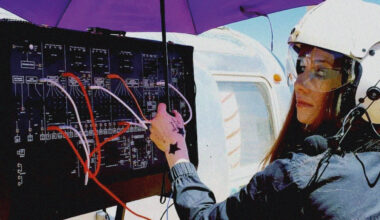Guildford is perhaps not quite where you would expect to find a groundbreaking open access project stuffed to the gills with gobsmacking high-end Moog gear. but Guildford is where you’ll find the Moog Sound Lab. Step this way and feel free to touch that dial
Amid the rolling greenery of the University of Surrey’s campus just outside Guildford, sits the world-renowned Institute of Sound Recording. Its walls are lined with gold discs bearing witness to the alumni who, as engineers, producers and composers, have had a hand in everything from Adele to Alt-J.
Along the corridors are various smartly rendered studios fully kitted out for the rigours of pop, classical and film recordings. And inside one of the smaller rooms, which on first glance may not look quite as snazzy, is an array of almighty modular machines.
This is the home of the Moog Sound Lab, the first international outpost of the one and only Dr Robert Moog. The mobile studio is on long-term loan to the UK for sonic experiments and artist residencies, as well as special events across Europe. The Lab also operates a record label, Moog Recordings Library, which releases select studio sessions on vinyl and provides an important resource for the Institute’s music students. Driven by an open access ethos inspired by the outlook of Dr Bob and the Lab’s raison d’etre, anyone studying at the Institute is able to lay their hands on these legendary machines.
The man behind this major modular coup is an industry wrangler known for running the Blast First label and its later Mute incarnation, Blast First (Petite). Over the past 30-odd years, Paul Smith has managed a huge roster of influential artists, including Throbbing Gristle, Cabaret Voltaire, Wire and even Lee “Scratch” Perry. He still manages one-time TG members Chris & Cosey and he partially has Chris Carter to thank for his latest analogue brainwave.
It all started at South By Southwest in Texas in 2014, when Paul Smith fielded an invitation for Chris & Cosey to open for Gary Numan on the Moog Inc stand. As it happens, that particular pairing didn’t materialise, but it set the gears in motion.
“I was idly googling Moog on a day off during Chris & Cosey’s American tour and I spotted something on the Moogfest website called the Moog Sound Lab,” explains Paul. “I thought, ‘That looks interesting’ and dashed off a quick email to their generic address saying, ‘We should talk’.”
The next morning, he got a positive reply from Emmy Parker, Moog’s Head of Brand, which started a series of conversations and forged a transatlantic collaboration of epic analogue proportions.
Incredibly, after just a few phone calls, without having met him in person and with no fixed idea of what Paul had in mind beyond some talk of an “open access project”, Moog volunteered to send over some machines, including a then under wraps limited edition reissue of their classic 1960s System 55. Paul describes it as “the Stradivarius of modular synths”. Only a few hundred of the original flagship machines were ever made, each crafted by hand by Dr Bob himself, aided by a small assembly line. The demand way outstripped production, to such an extent that they often changed hands among early adopters. Mick Jagger apparently sold his to Tangerine Dream’s Edgar Froese.
Having arranged for the safe passage of the Moogs across the Atlantic and with a vision forming for artist residencies, Paul needed to find a suitable home for his new collection. By his own admission, he’s no tech-head, but fortunately he knew a man who was.
He’d previously crossed paths with Surrey University’s Head of Music, Professor Tony Myatt, partly through Tony’s work designing complex surround sound systems for nature recordist and Cabaret Voltaire founding member Chris Watson. Tony, a Moog acolyte whose first synth was a Moog Rogue, jumped at the chance to house Paul’s shipment from America.
“The Institute attracts very serious audio engineers,” says Tony. “Through our courses in music production, creative music and audio engineering, our guys generally go on to work at top-flight studios like Abbey Road and Real World, as well as designing hardware or writing music themselves. But most artists don’t get a chance to experiment in a formal, supported setting. That’s what the Moog Sound Lab lets them do.”
Tony also provided the final piece of the puzzle, in the shape of the Lab’s in-house engineer Finlay Shakespeare. Although Finlay arrived fresh from the Institute’s industry-leading Tonmeister course, he’d been running a business making synth modules since his early teens. He’s a dyed-in-the-wool Moog ambassador and he’s especially enthusiastic about the 55.
“There’s simply nothing like it,” declares Finlay. “No other mobile electronic music studio in the UK offers synthesis power on a par with the Lab. The System 55 has its idiosyncrasies, but these quirks can be used as features and have been employed by artists working here to great effect.”
The Moog Sound Lab’s artist residencies began in February 2015, a year after Paul’s initial chats with Moog. While Paul welcomed the company’s trust and open-mindedness, their rather free and easy ethos presented some logistical challenges too. The System 55 arrived at Heathrow Airport and sat shrink-wrapped on a pallet for a week before anyone alerted him to its arrival.
“Moog have been incredibly generous,” says Paul. “Not just in embracing the initial idea, which they got immediately, but also with the free loan of their core instruments, which was a big ask in the first place.”
Artists visiting the Lab need no prior knowledge of synthesis. Their approach to working there varies accordingly.
“It’s been amazing to see how different artists from different disciplines, including some from outside the music world, have reacted to the equipment and to the sounds produced,” says Finlay. “Some come with specific ideas, others need guidance. With Mika Vainio’s sessions, my role was very hands off. I mostly ended up making him mugs of green tea! My role as an engineer often crosses over into being a translator between the artists’ creative ideas and the synthesisers’ technical possibilities.”
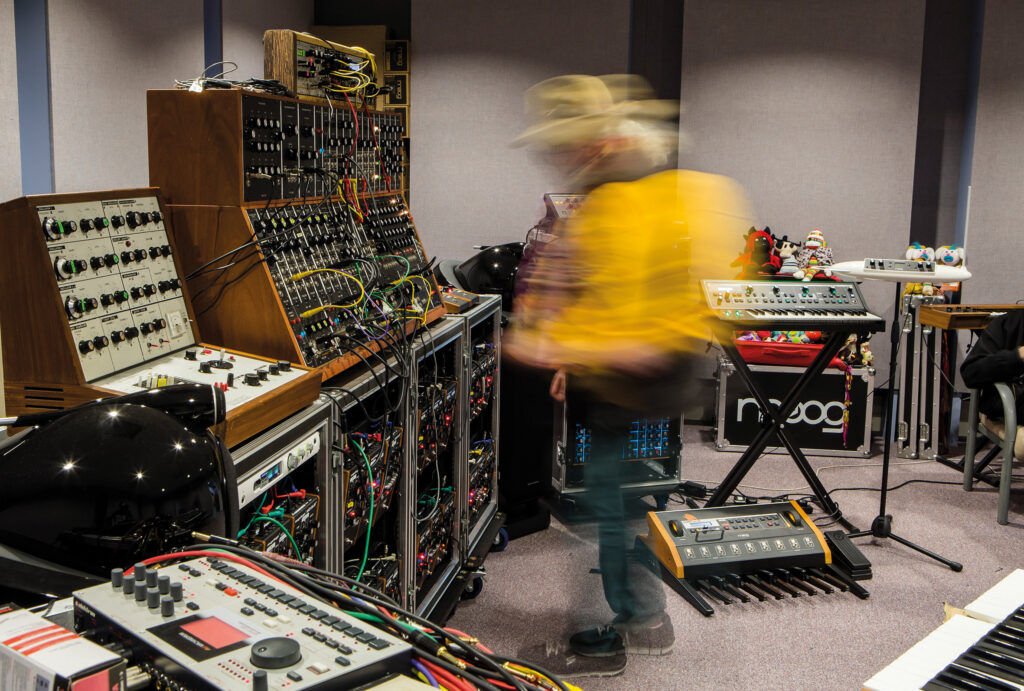
These antiquated wooden boxes certainly hold a tonne of history in their circuitry, so you can see how they might inspire levels of awe, fear and reverence in today’s artists. The 55’s Low Pass Filter was one of only a few synth circuits to actually be patented, and when Arp produced similar technology it prompted Moog into swift legal action. Despite all this daunting history, so far just one artist got so spooked that they failed to turn up for their session. Most have risen to the challenge.
“We have found that most people enjoy playing something like the 55 that isn’t pre-set driven,” notes Finlay. “Something where they have to apply some degree of thought to playing it.”
The development of many of these magical machines was often directly influenced by the artists working with them, including some who were using Moogs to replicate decidedly more traditional instruments, such as Wendy Carlos. It’s a tradition which the Lab continues to encourage today under Finlay’s guidance.
“I designed and built a pick-up system to use with acoustic drumkits,” he says. “This was used incredibly well by Tony Allen and Jimi Tenor, where Tony’s kit was used to trigger different synth lines within the Lab, so his kick drum would ‘play’ the bassline of each song.”
But while it’s undoubtedly the studio’s centrepiece, there’s plenty more to the Lab than the mighty 55. The studio houses six portable, inter-changeable racks of Moog instruments and processors. There are Mother-32s, Voyagers, Moogerfoogers and an EMS VCS 3, which is fully integrated with the Moogs. There’s even a rare vintage foot pedal-operated Taurus bass synth, the mother of all Prog synths, famously exploited by Yes, Genesis and Rush, among others.
“The now discontinued analogue delay pedals are a marvel,” enthuses Finlay. “They run the same audio through all four channels and pan their outputs to different spaces in the stereo field, setting their times slightly differently. The end result is instant beauty.”
To complete the picture, there are suitably high spec ancillaries, including Bowers & Wilkins speakers, an AMS Neve mixing desk, a Prism Sound analogue-to-digital interface, and Elektron rhythm composers. Quite simply, this is a modular fan’s dream and one hugely powerful synth studio to boot.
An audiophile’s playground it may be, but there’s nothing static about this place.
“The Moog Sound Lab was designed to be mobile,” says Finlay. “It’s important to get it out to different locations and contexts. It’s not exactly portable, but we can fit it in a Luton Van.”
Paul Smith wasted little time in getting the Lab show on the road, making its live debut in April 2015 by marking Record Store Day at the ACE Hotel in Shoreditch, east London.
“The ACE Hotel series was very special,” remembers Paul. “I’d just popped in to blag some cheap rooms for our artists playing at the forthcoming Moog Concordance, so they could have a bit more time without killing the festival’s budget. But Vickie Haywood, then ACE Hotel’s ‘Cultural Engineer’, ran with the idea, suggesting we put the Lab in one of their hotel rooms, which meant the artists were able to live, work and sleep with the Moogs on their four-day residencies and then perform in the hotel’s basement.”
Around 20 of Brion Gysin’s stroboscopic Dreamachines were added to the mix for extra psychedelic effect, so the audience could sit with their eyes closed experiencing these beautiful synth pieces.
A few months later, in July 2015, the Lab hosted an event to mark the 10th anniversary of Dr Bob’s death. The studio was set up at the Barbican Arts Centre for the Moog Concordance, a three-day festival featuring Will Gregory’s Moog Ensemble alongside Keith Emerson and Suicide.
“Suicide’s ‘Punk Mass’ was a riot,” says Paul. “There was a whole section of people dancing on the chairs and there were girls being chased off the stage by the security. I don’t think the Barbican had seen anything quite like it.”
Landmark happenings are all well and good, but the Lab was always envisaged as something bigger and transformative, as a participatory, open access project.
“It’s important to put it in an international cultural context too,” says Paul. “The innovation and the openness is all part of the Lab’s mission.”
The academic status of the Institute of Sound Recording lends it further gravitas and makes a wide range of events viable. The Moog Weekender symposium earlier this year, for example, featured music historian Thom Holmes. Thom presides over ‘The Sound Of Moog’, an immense archive of Moog recordings, and is working on a book to document every single recording of a Moog ever committed to tape. Alongside the various round table discussions and workshops, the man who indirectly inspired the Lab’s genesis, Chris Carter, also played a solo set, as did Chris Watson.
The Lab plans to host more Weekenders over the next year, open not just to students, but also to the public, providing further chances to engage budding modular bods.
The educational aspect of the Lab’s tie-up with the Institute is the real clincher. Students can pop along and watch artists working, twiddling the knobs and patching away, and can ask them questions, all very informally. More than anything perhaps, this type of open source activity is what makes the project as unique as the hardware it harbours.
“The students who sat in on The Grid’s session had the chance to witness creative professionals close up,” explains Tony. “They watched them working pieces up from scratch, experimenting and collaborating. The educational value of that is massive.”
Moog Sound Lab Founder Paul Smith muses on the triumphs and tribulations of The Lab and its sister record label, Moog Recordings Library

Tell us about the Moog Recordings Library label, Paul.
“It’s a limited edition vinyl imprint that releases the results of the Moog Sound Lab sessions. I initially wanted to establish the label as a serious, long-term library. It has allowed us to put the Lab into the hands of a wide range of established artists who are naturally, in the tradition of Dr Robert Moog, encouraged to experiment. Experiments can go wrong, of course, otherwise they’re not really experiments, but so far pretty much every artist has come through for us.”
Do the people invited to use the Lab need modular synth proficiency?
“It’s all about artists with ideas being able to access this beautiful, unique instrument, so no prior synth knowledge is required. Finlay [Shakespeare] is a very gifted musical engineer who can guide and teach artists. I think one of the reasons that Moog were so supportive is because I’m not into ‘synth porn’ and I’m not too interested in the tech side. It’s just a fabulous, big sound, colouring box to me.”
Tell us about the diversity of acts on the MRL label.
“One of my favourite sessions was with the American artist Bruce McClure. He uses blank film and film projectors as his primary sound generators, and he produced some truly psychedelic Moog experiences. We’re actually still trying to find the right context to present this work.
“Chris Watson, the BAFTA-winning location sound recordist, has certainly achieved the subtlest use of the Lab to date. He presented a live rendition of his Moog work at the Institute of Sound Recording’s Moog Weekender recently, which was a very beautiful and surprisingly emotive sonic experience.
“Mika Vainio, who sadly died recently, was planning to return to the Lab on a regular basis. He told me he could happily work with nothing but the Moog for the rest of his life. There’s also Acid Mothers Temple, who just roared through their session. Very exciting, high energy, full band stuff, and a great example of integrating synths with cosmic rock music.”
Any favourite experiences from the sessions?
“The Grid very kindly agreed to be our inaugural session. Finlay was literally still building the Lab around them as they worked and new equipment was arriving each day. Their enthusiasm, the way they grabbed at the opportunity and enjoyed it, made me realise that this would actually work really well as an artistic experience.
“The following week, Charlemagne Palestine was in session. He produced a brand new piece pretty much every day he was there. It was a steep and amusing learning curve for Finlay as our engineer. Charlemagne is more of an intuitive artist, so he’d give Fin instructions like, ‘Can you make it more Moogy Schmoogy sounding?’. Surrey University’s Tonmeister sound engineering course is world class, but you’ve still got to learn to apply that knowledge to working with real people.”
How much input have Moog themselves had and how have you found working with them?
“Moog have been incredibly generous, not just in embracing the initial idea, which they got immediately, but with their loan of the core instruments. Equal to that is their trust in us and the freedom they have given the project. I think the only argument I recall having was over them wanting their name presented in a more discreet manner on the MRL record labels. The artists and I wanted their name big and bold, right up front.”
What’s been the biggest challenge you’ve faced bringing this project to life?
“Getting the idea of what we are trying to do out in the world without it looking like some cheesy marketing campaign and falling victim to commerciality. This is a collaborative project – between Moog, Surrey University and the artists – and information is freely exchanged, not bought and controlled.”
How do you see the project developing?
“This is still early days for us, so slow and steady is the only way forward. That, of course, has a real world financial strain, as we are currently completely unfunded. A couple of zero per cent credit cards just about keep us afloat. Cargo Records distribution came on board to support the MRL releases, which if successful will establish an income stream that can be ploughed back into the session season, while Surrey University giving us a physical home was just huge. We’ve also had fantastic ongoing support from the likes of AMS Neve, Prism Sound and Elektron Sweden, while Bowers & Wilkins UK helped us loads by supporting us in the initial phase of the Lab. We’ll really miss their lovely speaker system and all the artists got some very nice free headphones!”
How do you see your open access plans panning out?
“It is a core belief for us, but difficult without specific funding. Our first Moog Weekender in February saw our first public conversations on open access. A social project for first time offenders will hopefully happen soon and we’ve had an individual synth enthusiast try it out already. It’s probably time to start conversations with the likes of the PRS Foundation and the Arts Council, so we can develop the concept further and establish a programme.”
Remember the first time? Richard Norris, Nik Void and Jimi Tenor tell us their Moog memories
Nik Void (Factory Floor)
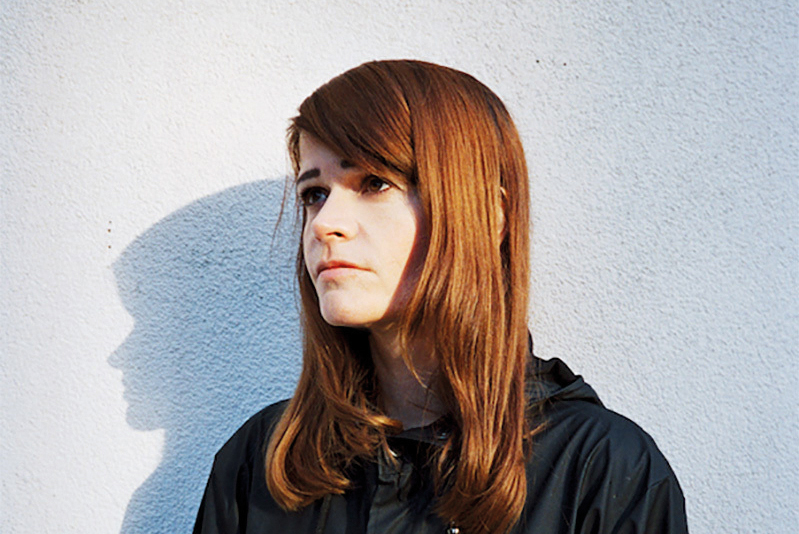
When did you first became aware of Moog?
“When I heard the opening theme for ‘Clockwork Orange’ by Wendy Carlos.”
When was the first time you got your hands on a Moog?
“It was a Moog Sub Phatty at Triangle Studios in Seattle. A friend of mine, Chris Walla [Death Cab For Cutie], owned it at the time.”
How did you become involved with the Moog Sound Lab?
“When Paul Smith, my former manager and the founder of Blast First, suggested me to Supersonic Festival.”
Tell us about your experience.
“The Lab has so much to offer – Voyagers, Minitaurs, massive amounts of Moogerfoogers – but the System 55 was what I wanted to focus on. I took my modular system with the idea to replace my main voice, the Atlantis by Intellijel, with the 55. The in-built sequencer is fun to manipulate for its large scale, stop and go function, so you can tune in and sculpt each individual step. It’s a machine I can spend endless hours with.”
Jimi Tenor
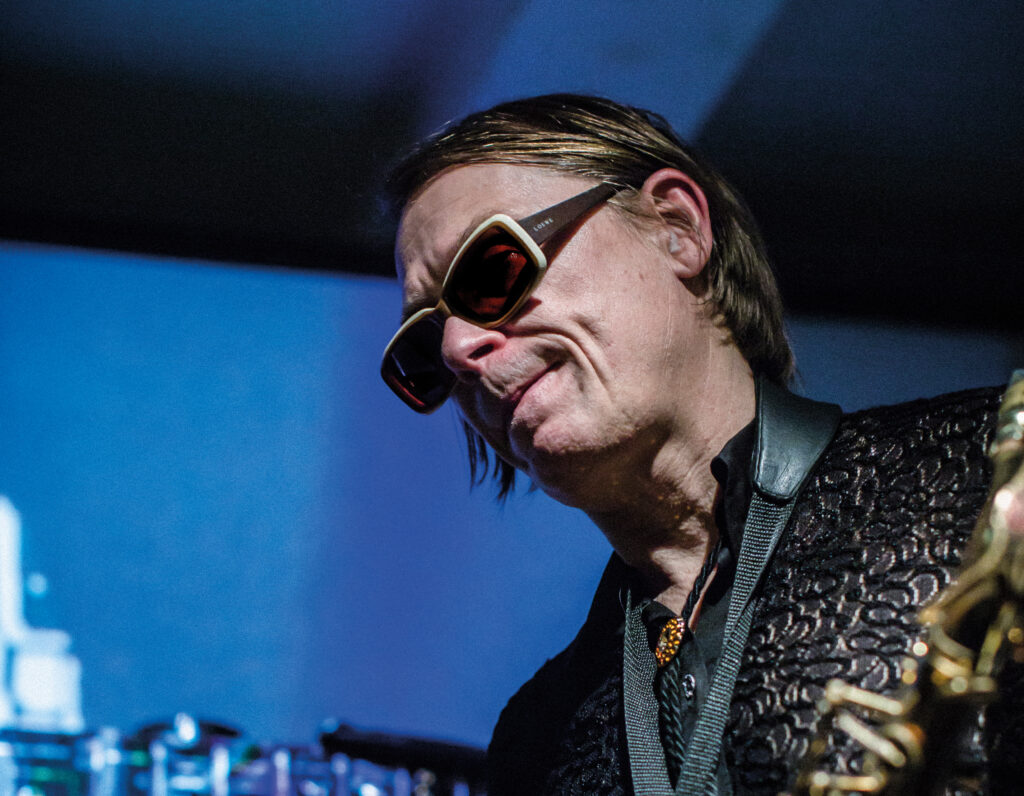
When did you first became aware of Moog?
“I must have seen a Moog in images of Keith Emerson on stage, but I didn’t know what it was. In the late 80s, a friend of mine had a Moog Rogue and apparently inside the instrument there was a signature that Bob Moog made with a pencil. I already had a Korg MS-20 and I noticed how different they sounded.”
What does Moog mean to you as an artist?
“When I need a good synthesiser bass sound, I always choose a Moog. I love the sound. Especially the bass. The only Moog I ever actually owned was a Moog Rogue. I think it was marketed as a bass synth, but I love the simple interface. All the sounds you get are simple and meaningful.”
When was the first time you got your hands on a Moog?
“I was going on tour and I my Korg MS-20 was really broken. I needed a replacement and I bought a Moog Rogue via mail order. I loved it. But touring wasn’t good to that instrument.”
Tell us about your experience with the Moog Sound Lab.
“Our plan was to trigger a step sequencer using drum sounds as the trigger signal. That way, we could get real time synth basslines that would follow the rhythm of the drums. I had worked with Tony Allen before, so we asked him to do the drumming. On stage, it was just Tony and me and loads of synths. It was crazy! But it worked out somehow!”
Richard Norris (The Grid)
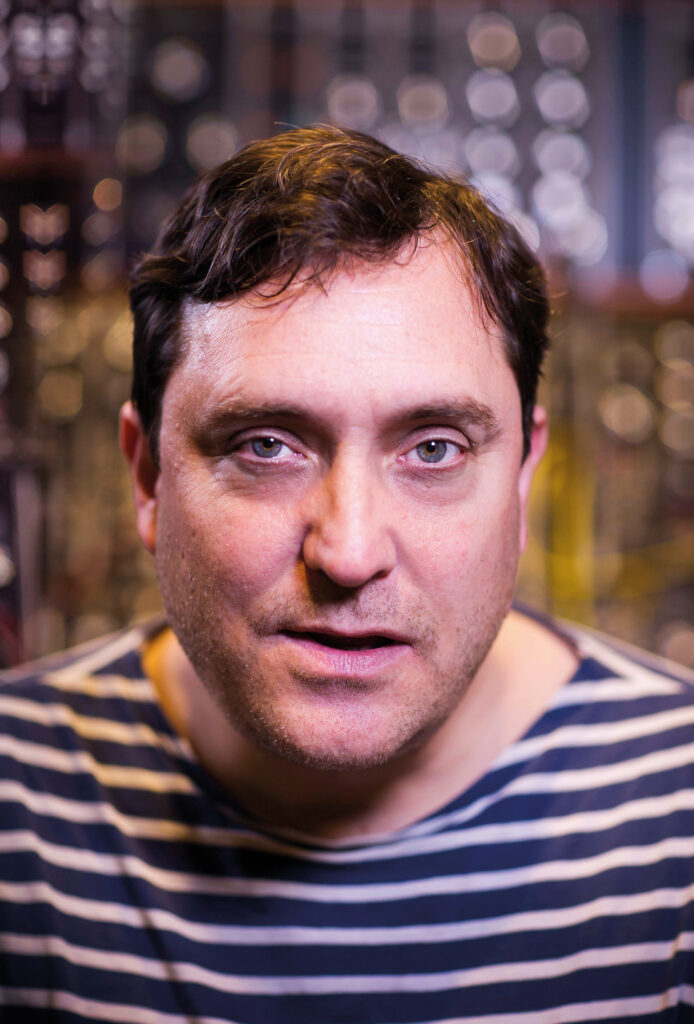
When did you first became aware of Moog?
“Moog has been with me since childhood. In the 1970s, kids telly was awash with analogue strangeness and hearing all those squelchy synth riffs on ‘Top Of The Pops’, from ‘I Feel Love’ to ‘Blue Monday’, sealed the deal. I started delving a bit deeper, aided by ‘The Nonesuch Guide To Electronic Music’ by Beaver & Krause, performed on a Moog Series III.”
What does Moog mean to you as an artist?
“I love that pure fat tone. Although much imitated, it’s impossible to beat. I love the West Coast Buchla sound and philosophy equally, but as a player I gravitate towards Moog. There’s still a lot to learn from these instruments, particularly the modulars.”
When was the first time you got your hands on a Moog?
“It was a Moog Prodigy, which I found in 1988, in very good nick, complete with manual, on Portobello Market, a few hundred yards from where I’m sitting now. It cost 50 quid. I marvelled at its deepness. We used various Moogs in The Grid, including that Prodigy, and also Minimoogs and various Midimoogs.”
How did you become involved with the Moog Sound Lab?
“Dave Ball and I have known Paul Smith for donkey’s years. He helped us get Sun Ra to play on ‘456’, the second Grid album. Anyone who can get Sun Ra to collaborate with you has got to be alright. We bumped into each other a lot over the years and he asked us to be the first band to try out the Lab. It was a great honour and also a little scary.”
Tell us about your experience.
“We arrived at Surrey University to be greeted by Paul, the irrepressible Finlay Shakespeare, and stacks of boxes and crates with Moog stamped on them. The System 55 took pride of place, a towering centrepiece among racks of Voyagers, Subs, Fattys, Taurus pedals, Moogerfoogers, theremins and more.
“We were lucky the 55 was there, as it had been lost somewhere on campus for a couple of days! What a beast. What an incredible instrument. Working with the Lab had a very marked effect on me. Previously, I’d thought of electronics and nature as pretty far apart. Here, however, the sounds seemed directly connected to the elements. It was like plugging into the earth or into lightning. It gave me a richer appreciation of synthesis that continues to this day. Viva Robert Moog.”
Future events also include a slot at Devon’s hybrid music and words festival Sea Change and, following a stint at the Science Gallery Sound Check exhibition at Trinity College in Dublin, the Lab will also be travelling to Scandinavia as part of an international programme in 2019. And there are other, bigger, more mainstream plans in the pipeline as well.
“We look set to be part of the next few BBC Music Days, which will be very exciting, creating and broadcasting, Moogin’ live on air,” says Paul. “When I told the BBC that the synthesiser was the first new instrument invented since the saxophone, the first thing they said was, ‘That could work really well on “The One Show”.’ Which isn’t something I’d considered, but it shows you how much potential they can see in the concept.”
And wherever the Moog Sound Lab goes, you can be sure that same spirit of openness and invention that infused Robert Moog half a century ago won’t be far behind.
“We want to get the idea of the Lab and what we’re trying to do out there without it looking like some cheesy marketing campaign or falling victim to commerciality,” concludes Paul Smith. “We don’t want popular artists thinking they can simply open their wallets to get in the door. It’s a collaborative project where information is freely exchanged. Exclusivity is not the name of the game here.”
